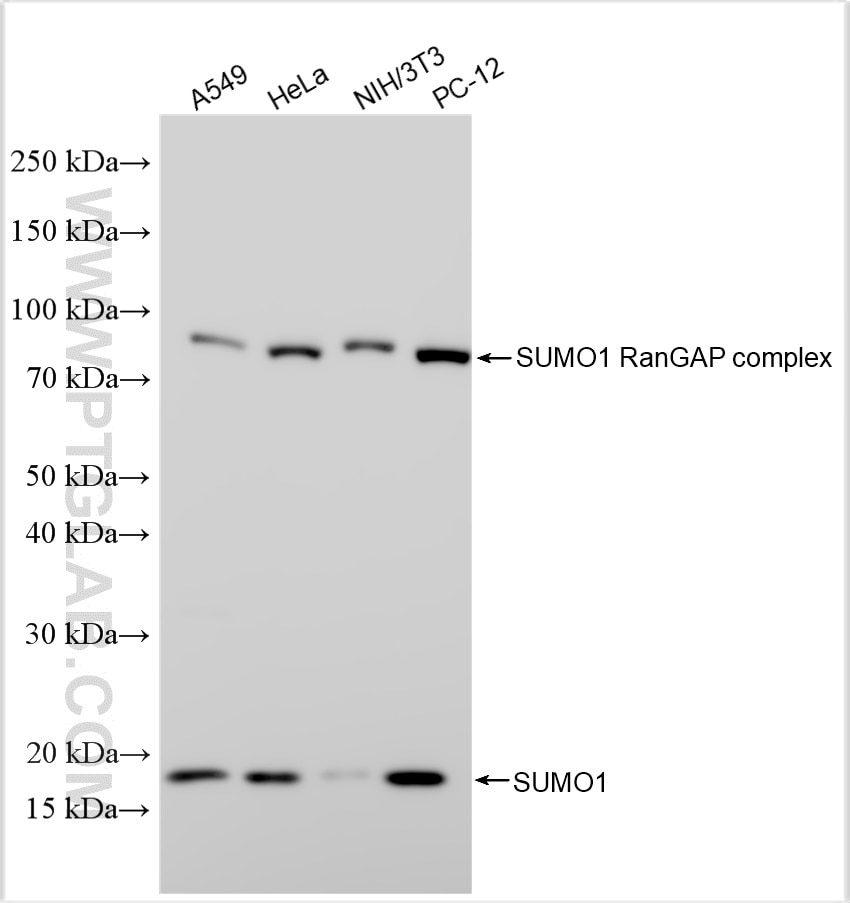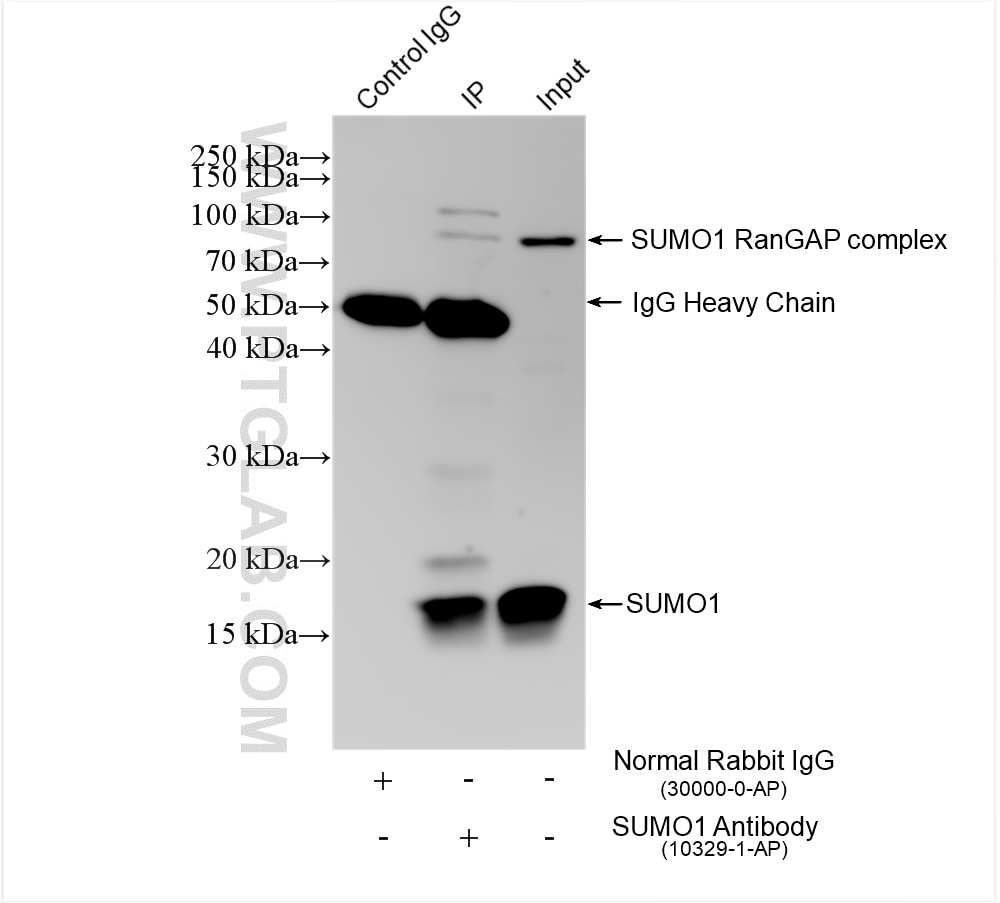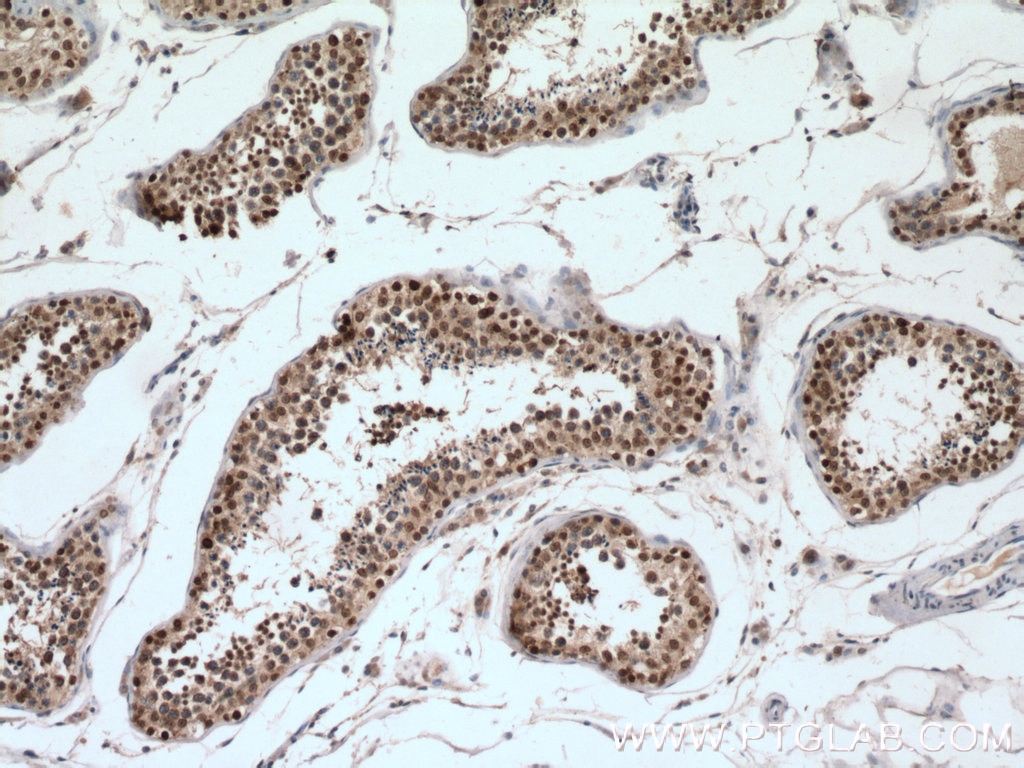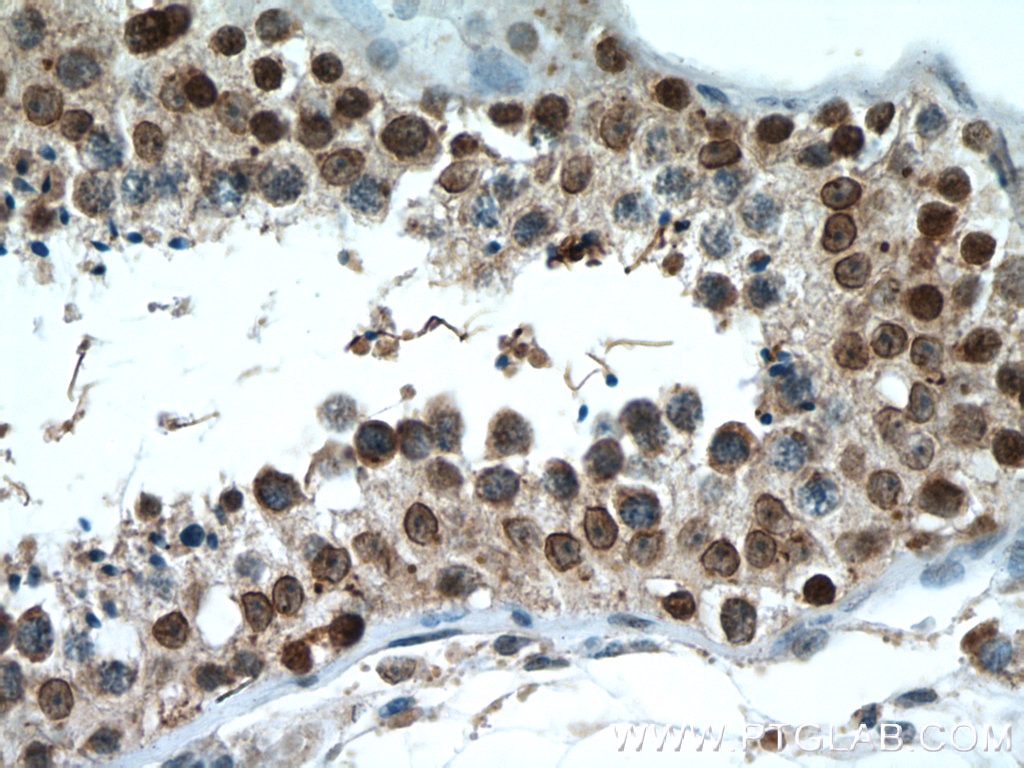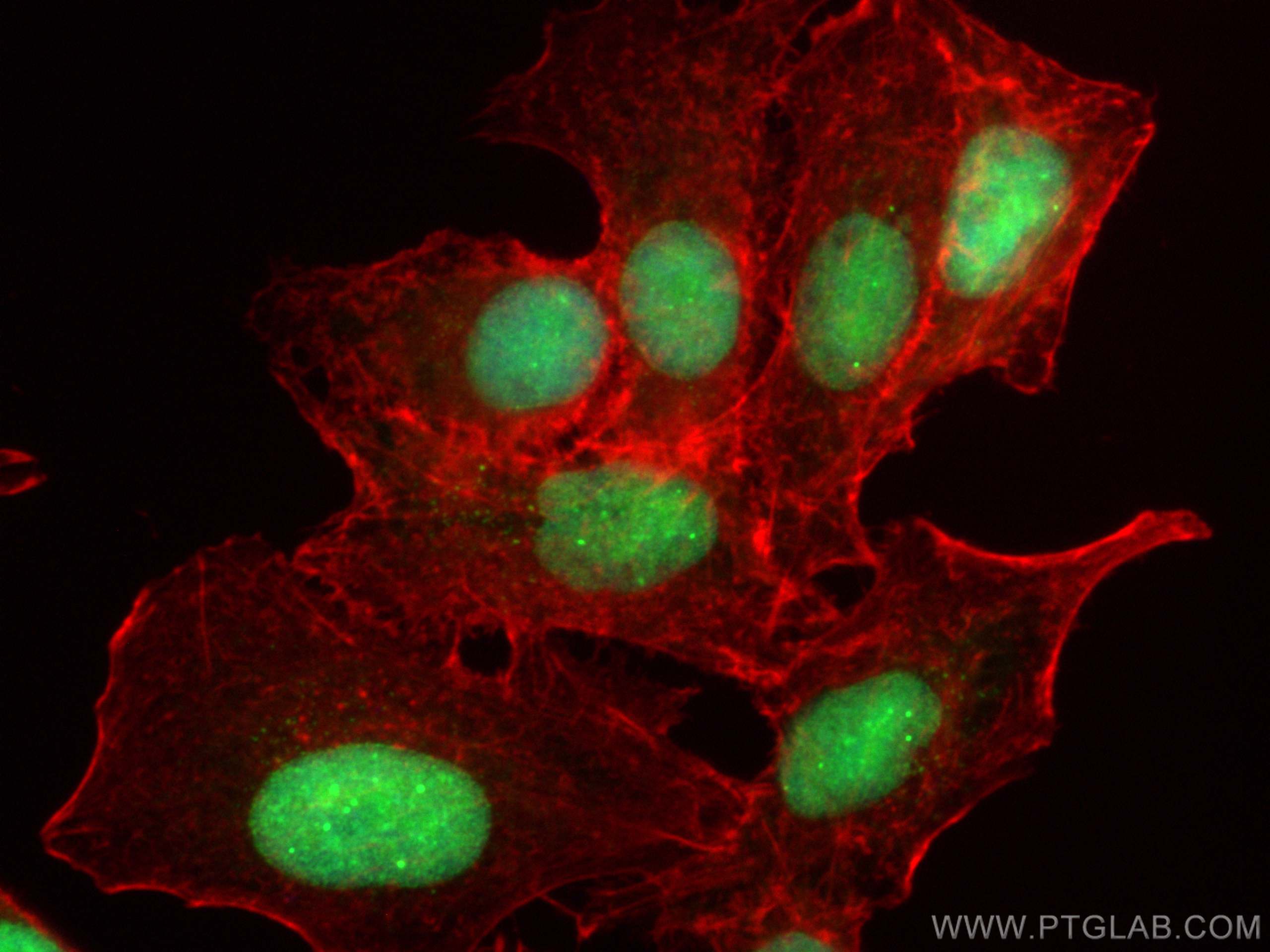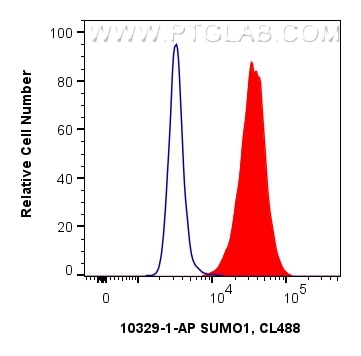SUMO1 Polyklonaler Antikörper
SUMO1 Polyklonal Antikörper für WB, IHC, IF/ICC, FC (Intra), IP, Indirect ELISA
Wirt / Isotyp
Kaninchen / IgG
Getestete Reaktivität
human, Maus, Ratte
Anwendung
WB, IHC, IF/ICC, FC (Intra), IP, Indirect ELISA
Konjugation
Unkonjugiert
Kat-Nr. : 10329-1-PBS
Synonyme
Geprüfte Anwendungen
Produktinformation
10329-1-PBS bindet in WB, IHC, IF/ICC, FC (Intra), IP, Indirect ELISA SUMO1 und zeigt Reaktivität mit human, Maus, Ratten
| Getestete Reaktivität | human, Maus, Ratte |
| Wirt / Isotyp | Kaninchen / IgG |
| Klonalität | Polyklonal |
| Typ | Antikörper |
| Immunogen | SUMO1 fusion protein Ag0414 |
| Vollständiger Name | SMT3 suppressor of mif two 3 homolog 1 (S. cerevisiae) |
| Berechnetes Molekulargewicht | 12 kDa |
| Beobachtetes Molekulargewicht | 12~18 kDa, 80-90 kDa |
| GenBank-Zugangsnummer | BC006462 |
| Gene symbol | SUMO1 |
| Gene ID (NCBI) | 7341 |
| Konjugation | Unkonjugiert |
| Form | Liquid |
| Reinigungsmethode | Antigen-Affinitätsreinigung |
| Lagerungspuffer | PBS only |
| Lagerungsbedingungen | Store at -80°C. 20ul Größen enthalten 0,1% BSA. |
Hintergrundinformationen
Small ubiquitin-related modifier 1 (SUMO1) belongs to the ubiquitin family and the SUMO subfamily as it contains 1 ubiquitin-like domain and is also 18% identical to ubiquitin (PMID: 9654451).
1. What is the molecular weight of SUMO1?
The molecular weight of SUMO1 is 12 kDa.
2. What is the cellular localization of SUMO1?
SUMO1 is located in the nuclear membrane and is recruited by BCL11A to the nuclear body (PMID: 18681895).
3. What modifications is SUMO1 subjected to?
SUMO1 function occurs after the cleavage of its precursor form by SENP1 or SENP2 (PMID: 27576863). Polymeric SUMO1 chains also undergo polyubiquitination by RNF4 (PMID: 18408734).
4. What is the function of SUMO1?
SUMO1 post-translationally modifies many proteins that have roles in an array of processes including transcriptional regulation, chromatin structure, and DNA repair. SUMO1 can covalently attach itself to protein as a monomer or a lysine-linked polymer via an isopeptide bond (PMID:11124955). This SUMO modification can regulate the localization and activity of the affected proteins.
5. What is SUMO1's involvement in disease?
Defects in SUMO1 as a result of a chromosomal translocation are associated with non-syndromic orofacial cleft type 10, or non-syndromic cleft lip, and are associated with cleft palate in two-thirds of cases (PMID: 18983974).
